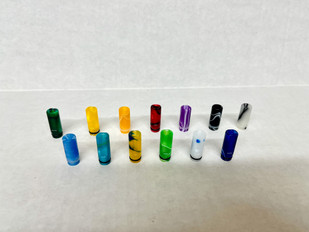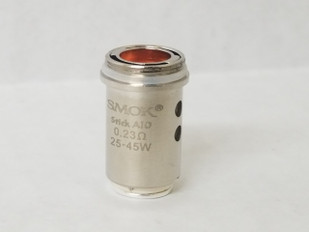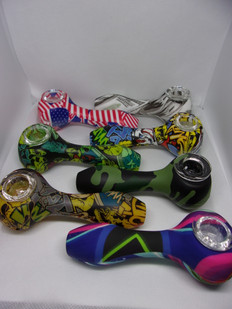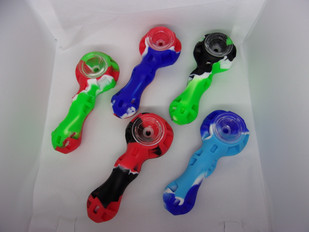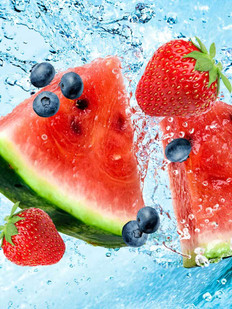- Home
- The Vape Mall Blog
- What is Water-Based Vaping?
What is Water-Based Vaping?
Posted by on
 Anyone who has been vaping for a while has seen the market
evolve a lot in a short period of time.
Once not too long ago, the market didn’t expand beyond low-battery
“e-cigs,” and now we have a massive selection of high-tech hardware and
innovative e-liquid formulas to choose from.
And with that being said, it’s time to explore a new development in the
vaping world: water-based vaping. And
no, we don’t mean filling your vape tank up with the water from your sink.
Anyone who has been vaping for a while has seen the market
evolve a lot in a short period of time.
Once not too long ago, the market didn’t expand beyond low-battery
“e-cigs,” and now we have a massive selection of high-tech hardware and
innovative e-liquid formulas to choose from.
And with that being said, it’s time to explore a new development in the
vaping world: water-based vaping. And
no, we don’t mean filling your vape tank up with the water from your sink.
What Exactly is Water-Based Vaping?
We’re all familiar with the standard vape juice formula used in all e-liquid products: vegetable glycerin (VG), propylene glycol (PG), nicotine and flavoring. This produces quite a viscous and oily formula that vaporizes once it interacts with the heat of the coil inside the tank or pod cartridge.
You might be surprised to learn that e-liquid formulas typically contain roughly 3% water. And, that’s where water-based vaping comes in. For years, companies have tried to develop an alternative to the standard e-liquid formulas we’re all used to, but the end result, have failed – at least until now. At last, water-based vaping is here, revolving around e-liquids that contain 30% water – in other words, 10x the amount as traditional vapes.
And, as you may have guessed, a formula that has a radically different consistency needs special hardware. So, as we speak, companies are developing special vape kits designed to handle a higher water content, meaning that if you want to get in on this budding trend, you’ll need to overhaul your entire setup.
Is it Advisable to Vape Water?
Water-based vaping doesn’t imply that a person can vape water, or simply add some water to their existing e-liquid. Like we’ve already discussed, today’s vaping hardware just can’t accommodate an e-liquid that has a higher water content than what’s standard – 3% -- because the e-liquid will simply burn due to its low viscosity. High water content can also damage your device, mainly because it’s likely to leak out of the tank almost as soon as you pour it in. So, this is a formula that should be left to the pros.
How Can Water-Based Vaping Improve Your Already Exciting Vape-Filled Life?
So, now you know the “what” when it comes to water-based vaping, but what about the “why?” Surely, there must be some pretty solid advantages to this method of vaping, or else companies wouldn’t be working so hard to develop it and bring it to the market.
Keeping in mind that the technology is extremely new, let’s explore what the companies behind this method are already saying.
Benefit #1: The Flavor is Better
It seems that water-based vaping is what flavor chasers have been waiting for. The idea is that water has a far lower impact on the flavoring ingredients in a formula than vegetable glycerin, so that you can really taste the e-liquid’s flavor profile in the way that its manufacturer intended. The taste is reported to be cleaner and more complex.
Benefit #2: Smoother Draws and Less Dehydration
Creating a water-based formula means less propylene glycol (PG) is needed to produce a vape juice. And, with lower PG is lower irritation on the inhale, as water is undeniably smoother. And, it’s the PG in e-liquid that tends to have a dehydrating effect – a sensation any heavy vaper is all too familiar with – so there’s a huge benefit of not feeling as thirsty or “dry” after vaping when you switch to water-based technology.
Benefit #3: You Can Vape at Lower Temps
Another great thing about water-based vaping is that it doesn’t require the super high temperatures/wattages that regular e-liquid does. Water has a lower boiling point than VG and PG, so your system can operate at a lower temperature consistently, which can prevent dry hits, overheating of your device and irritation. Of course, it’s going to be easier on your battery as well.
Are There Any Drawbacks to Water-Based Vaping?
Now you know the benefits of water-based vaping, but what about the drawbacks? Well, the biggest one is less cloud production. Water is thinner than PG/VG, so naturally the clouds aren’t going to be as thick, fluffy and massive each time you exhale. As we all know, it’s VG that’s responsible for thickening up those clouds, which is why high-VG vape juices are preferred by cloud chasers.
And, at the same time, water-based vaping won’t give you as much of a throat hit, since that largely comes from the PG in your e-liquid. So, you’re not going to get a true MTL type of vaping experience if you switch to water-based vaping.
How Can I Try Water-Based Vaping?
Water-based vaping isn’t fully on the market yet – neither the e-liquids or the hardware – but that’s going to change soon. The technology finally exists, and it has been tested to prove that it can satisfy vapers while being safe, reliable and effective. So, basically, keep an eye out if you’re intrigued by the idea of this new style of vaping.
Bottom Line: Water-Based Vaping is Likely to Become the Next Big Thing in the Vaping Industry
Water-based vaping is coming soon! If you’re intrigued by the idea of a lower-temp, smoother and more impactful way to enjoy your favorite e-juice flavors, you are going to want to look out for this new tech as it’s likely to appear in the coming months. Clearly, water-based vaping has a lot of pros – as well as some cons, depending on what kind of vaper you are – and because of that, we are certain it’s going to be a big deal in 2023.
 Loading... Please wait...
Loading... Please wait...






